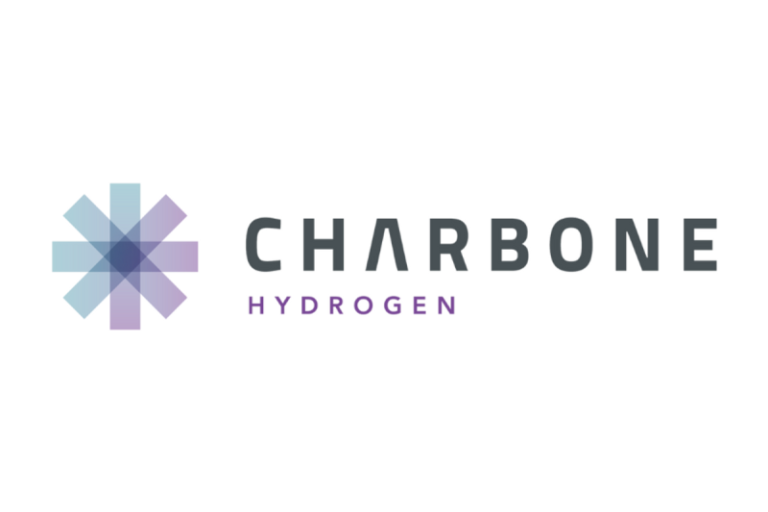Genetics is the study of genes, their variations and hereditary characteristics, as well as how these traits are passed on through generations. So what is genetics investing?
When it comes to genetics investing, companies in this niche of the life science sector are mostly focused on four submarkets: DNA sequencing, genetic testing, gene therapy and genomics, which includes gene editing.
This life sciences submarket has gained much attention from investors over the past several years. It has provided a launching pad for a number of biotech firms developing and commercializing novel treatments and drugs addressing a wide range of diseases with unmet needs.
For those looking to dive into the genetics sector, there are numerous investment opportunities to consider. Investing in gene stocks is the most common route, but there are risks due to the market’s volatility, especially when it comes to wins or losses with the US Food and Drug Administration (FDA).
Exchange-traded funds (ETFs) are another popular option for gaining exposure to the industry, and come with less risk than investing in a single stock.
In this article
What are the key areas of the genetics sector?
Before diving into investment opportunities in the genetics market, it’s important to understand the industry and the key areas of genetics mentioned above.
What investors should know about the genetics market
In the biotech sector, gene therapy is one of the more advanced treatment options, and gene therapy pipeline candidates are robust in late-stage clinical trials.
In terms of what will — and already has — disrupted the genetics industry, CRISPR gene-editing technology has been on the rise for quite some time. It uses short repeating DNA sequences with “spacers” dividing them to treat genetic diseases.
While the use of the technology is still in its early stages, in the coming years it’s expected to have a big impact on how genetic diseases are treated, and there are a range of clinical trials underway involving CRISPR technology. So far, the only FDA approved CRISPR-based medicine is Casgevy, developed by Vertex Pharmaceuticals (NASDAQ:VRTX) and CRISPR Therapeutics (NASDAQ:CRSP). It was originally approved in late 2023 for the treatment of sickle cell disease.
The prominence of gene therapies in the life science sector was a major theme at the 2025 JPMorgan Healthcare Conference in January 2025. Peter Marks, then-director of the FDA’s Center for Biological Evaluation and Research, told attendees that his agency is aiming to accelerate approvals for gene therapies.
In 2024, the FDA expanded approvals for CRISPR-based Casgevy to beta-thalassemia, and it also approved Pfizer’s (NYSE:PFE) Beqvez and PTC Therapeutics’ (NASDAQ:PTC) Kebilidi.
Despite experiencing a challenging year in 2024, there is still a lot of optimism in the gene therapy sector. Also speaking at the January conference, Alliance for Regenerative Medicine president Tim Hunt said he believes 10 new cell and gene therapy treatments could reach blockbuster status by 2030.
“No one’s saying there aren’t headwinds, but we are seeing important signs of growth,” he added.
Looking at DNA sequencing, this market is driven by advances in biotech, the increasing prevalence of cancer and rising demand for precision medicine, as well as higher investment in research and development. DNA sequencing has become a vital component of this growth and has played a key role in remodeling molecular biology and genomics research.
Genetic testing is another segment of the genetics industry that is growing at a fast pace. Unsurprisingly, technological breakthroughs have had a huge impact on genetic testing, and so has the fact that governments and regulatory bodies are turning their attention to this market in order to regulate and raise awareness to treat diseases such as cancer, cystic fibrosis and sickle cell anemia.
Biotech and pharmaceutical companies are also expressing interest in this sector, which is expected to further fuel genetics sector growth in the coming years. Mergers and acquisitions activity is also expected to increase as companies seek to expand their product portfolios new candidates and technologies.
As can be seen, the genetics industry is vast and complex, but is also ripe with investment opportunities.
How to invest in gene stocks
Investors looking to invest in the field of genetics through stocks have many options, from large-cap biotech companies to pure-play gene therapy, gene editing and genetic testing stocks.
See the list below for genetics companies to consider, and check out the linked stock lists for more options.
Large-cap gene stocks
There are a number of large-cap biotech companies that have significant focuses on the field of genomics. Here are a few to consider:
Amgen (NASDAQ:AMGN)
A global leader in biotech, Amgen uses advanced human genetics to develop and manufacture therapeutics targeting a variety of diseases with unmet medical needs. The company’s subsidiary deCODE Genetics is researching how human genetic diversity influences disease.
AbbVie (NYSE:ABBV)
Research-based global biopharmaceutical company AbbVie that addresses several key therapeutic areas: immunology, oncology, neuroscience, eye care, virology and gastroenterology. AbbVie is collaborating with ADARx Pharmaceuticals to develop siRNA therapeutics, viewed as a promising genetic medicine approach for silencing disease-causing genes.
Regeneron Pharmaceuticals (NASDAQ:REGN)
Regeneron Pharmaceuticals creates medicines for a wide variety of diseases. The Regeneron Genetics Center is conducting one of the world’s largest genetics sequencing efforts in collaboration with health organizations around the world.
Gene editing (CRISPR) stocks
There are a variety of options for investors looking to buy in on the field of gene editing stocks, including:
CRISPR Therapeutics (NASDAQ:CRSP)
CRISPR Therapeutics and its partner Vertex Pharmaceuticals co-developed drug Casgevy, a CRISPR/Cas9 genome-edited cell therapy. Casgevy is the first ever treatment based on CRISPR technology to be approved for the US market, as well as by the European Medicines Agency and Health Canada.
Intellia Therapeutics (NASDAQ:NTLA)
Intellia Therapeutics is a gene editing biotech company developing drugs for patients with genetic and autoimmune diseases. The company’s drug pipeline includes late-stage clinical programs for therapies targeting hereditary angioedema and transthyretin amyloidosis.
Vertex Pharmaceuticals (NASDAQ:VRTX)
Vertex Pharmaceuticals is the other half of the team behind Casgevy. It also offers exposure to other sectors of genomics, with approved treatments for cystic fibrosis and a pipeline of genetic and cell therapies. Its investigational VX-880 islet cell replacement therapy could restore insulin production in patients with type 1 diabetes.
Gene therapy stocks
Gene therapy stocks and stem cell stocks are also popular choices for genetics investing. Here are a few to get you started:
Novartis (NYSE:NVS)
Switzerland-based Novartis is focused on treatments for a wide range of diseases, including cancers, malaria, leprosy and sickle cell disease. Novartis is developing adeno-associated-virus (AAV)-based and CRISPR-based gene therapies. Its Kymriah treatment was the first CAR-T cell therapy to be approved by the FDA, and the agency also approved its AAV-based therapy Zolgensma.
Gilead Sciences (NASDAQ:GILD)
Global biopharmaceutical company Gilead Sciences is advancing breakthrough medicines to prevent and treat serious diseases such as HIV, viral hepatitis and cancer. Its cell-based gene medicine for blood cancer, the CAR T-cell therapy Yescarta, was the second gene therapy approved by FDA.
uniQure (NASDAQ:QURE)
Genomic medicine company uniQure develops and markets gene therapy products for patients with severe genetic diseases. The company’s AAV-based gene therapy platform targets liver-directed and central nervous system disorders.
Genetic testing stocks
For those interested in genetic testing stocks, these three stocks provide a snapshot on different ways to get exposure to the sector:
Exact Sciences (NASDAQ:EXAS)
Exact Sciences focuses on molecular diagnostic tests. The company has developed a molecular screening technology platform called Cologuard that detects a range of cancers, including breast cancer and colorectal cancer.
Fulgent Genetics (NASDAQ:FLGT)
A leader in clinical diagnostic genetic sequencing, Fulgent Genetics is a full-service genomics testing company. Its proprietary technology platform, Picture Genetics, allows for the identification of personal DNA health markers in individual patients.
Illumina (NASDAQ:ILMN)
Illumina develops, manufactures and markets life science tools and integrated systems that enable the implementation of genomic solutions for the healthcare sector. Its focus is on oncology testing, genetic disease testing, reproductive health and research.
How to invest in genomics ETFs
For those who would prefer to invest in the genetics industry overall rather than buying shares in an individual gene stock, investing in genomics ETFs is the way to go. Here are some available ETFs that offer exposure to companies in the biotech and genetics sectors to start you off:
ARK Genomic Revolution ETF (ARCA:ARKG)
This ETF tracks firms focused on CRISPR technology, targeted therapeutics, bioinformatics, molecular diagnostics, stem cells and agricultural biology. Its holdings include CRISPR Therapeutics and Guardant Health (NASDAQ:GH).
Global X Genomics & Biotechnology ETF (NASDAQ:GNOM)
The Global X Genomics & Biotechnology ETF invests in stocks that are involved in genomic science, which includes gene computational genomics and biotechnology. Its holdings include Illumina and Avidity Biosciences (NASDAQ:RNA).
iShares Genomics Immunology and Healthcare ETF (ARCA:IDNA)
The iShares Genomics Immunology and Healthcare ETF focuses on companies involved with genomics, immunology and bioengineering. Its holdings include Regeneron Pharmaceuticals and Arcellx (NASDAQ:ACLX).
Securities Disclosure: I, Melissa Pistilli, hold no direct investment interest in any company mentioned in this article.










